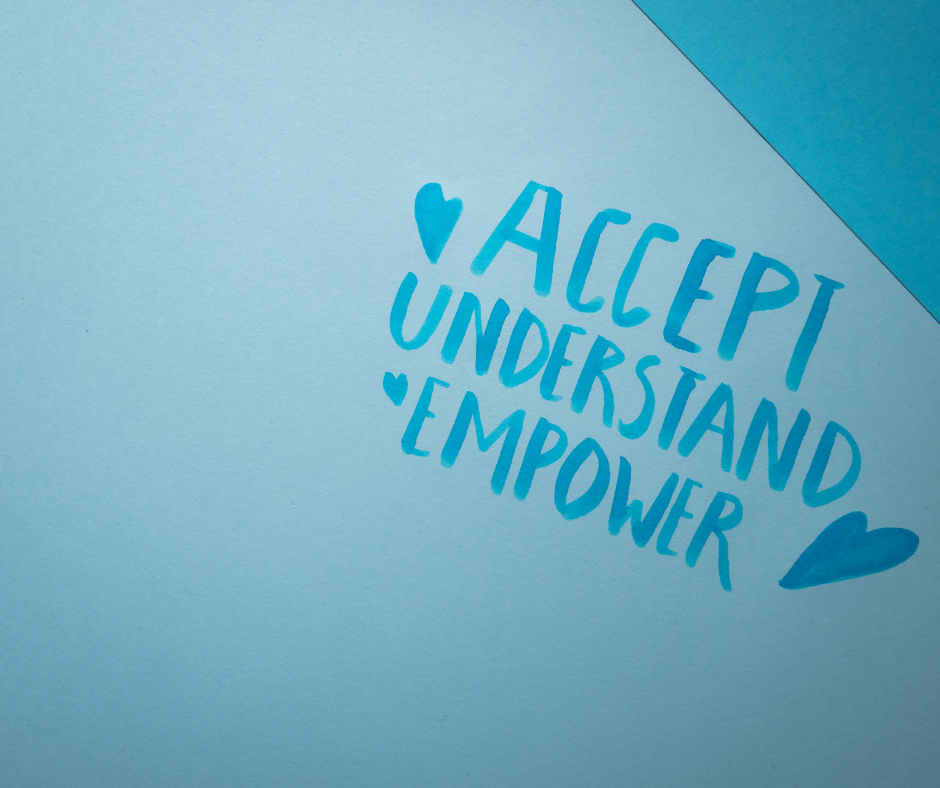
In today’s fast-paced and diverse work environment, understanding the intricacies of a “breach of code of conduct” is more crucial than ever. This comprehensive guide will delve into what constitutes a code of conduct violation, the different types of breaches, and their consequences. By the end of this blog post, you will be equipped with the knowledge to navigate workplace challenges and foster a harmonious work environment.
- A breach of code of conduct is any action that goes against a company’s established policies and guidelines.
- Violation of a code can result in serious disciplinary action, including potential legal repercussions.
- Academic dishonesty, including actions like plagiarism and cheating, is a prime example of a code of conduct violation in academic settings, undermining the integrity of the educational process.
- Preventing breaches involves employee education and training, reporting/investigating suspected violations, developing an inclusive & regularly reviewed code of conduct.
A code of conduct is a set of guidelines to follow in the workplace. It contains policies, behaviors, and consequences that aid in avoiding any conduct violations. It serves as a roadmap for employees, helping them understand the conduct expected in the workplace and what constitutes a violation of the company’s rules and policies. Establishing a code of conduct is a vital step for employers to uphold ethics, professionalism, and foster a positive work environment.
A breach of code of conduct implies the violation of the principles, rules, or regulations stated in a formal code of conduct. It may be intentional or unintentional and may result in repercussions or penalties, making it crucial for employees to be aware of potential breaches. A thorough understanding of the code of conduct, as well as potential breaches, helps employees steer clear of actions detrimental to their employer, clients, or colleagues.

What is a breach of code of conduct?
A conduct breach, or a breach of the company’s code of conduct, is any action that goes against a company’s established policies and guidelines, either intentionally or unintentionally. These violations can be categorized as workplace code of conduct violations, including inappropriate physical contact, discriminatory remarks, spreading gossip, and improper social media conduct, and professional code of conduct violations, each with its own set of consequences. Recognizing and grasping these categories aids employees in complying with the company’s code and upholding a professional work environment.
Potential outcomes of code of conduct violations may include verbal or written reprimand, suspension or dismissal, and legal consequences. To prevent such outcomes, companies are advised to adopt best practices for establishing a code of conduct, such as clarity and consistency, inclusivity and accessibility, and periodic review and modifications. In doing so, companies can clearly convey their expectations and foster a conducive work environment.
The Significance of Ethical Behavior in Code of Conduct
The importance of a code of conduct lies in its capacity to:
- Illustrate corporate values
- Direct employee behavior
- Comply with legal requirements
- Foster a positive work environment
Providing clear expectations and outlining the consequences of violations enables employees to comprehend the company’s values better and stick to ethical standards. This, in turn, contributes to a more respectful and professional work environment.
Clearly defining unacceptable behavior, such as misconduct, helps prevent misunderstandings and conveys that such conduct is not tolerated by the organization. Addressing misconduct in the code of conduct includes:
- Clearly stating the types of behavior that are considered misconduct
- Outlining the consequences for engaging in misconduct
- Providing examples of specific actions that constitute misconduct
By including these details in the code of conduct, employees are made aware of the potential consequences and are encouraged to comply with the company’s policies, fostering a harmonious and ethical workplace. The inclusion of ethical practices within the code of conduct further guides employee behavior towards maintaining high standards of fairness, environmental sustainability, and social responsibility.
Code of Conduct Examples
Code of conduct examples are essential for establishing clear guidelines and expectations for behavior within a specific context or community. These examples serve as a framework to promote respectful interactions, inclusivity, and a positive environment. An effective code of conduct should outline the acceptable and unacceptable behaviors, fostering a culture of respect, collaboration, and diversity. For instance, within a professional setting, a code of conduct may emphasize professionalism, honesty, and accountability in communication and collaboration. Similarly, in an online community, the code of conduct might stress respectful communication, tolerance, and the importance of valuing diverse perspectives to create a harmonious online space.
Types of Code of Conduct Violations

Code of conduct violations can be categorized into two main types: workplace code of conduct violations and professional code of conduct violations.
Comprehending the differences between these two categories enables employees to follow the appropriate rules and regulations in their respective work environments.
Workplace Code of Conduct Violations
Workplace code of conduct violations include actions such as harassment, discrimination, and damaging the reputation of the company. Examples of these violations can range from inappropriate physical contact and offensive language to disseminating rumors and engaging in activities that could harm the company’s reputation. Sexual harassment, in particular, is recognized as a serious workplace code of conduct violation, emphasizing the need for awareness and prevention to ensure a safe and inclusive work environment.
Another example of a workplace code of conduct violation involves the use of social media. Employees who publish company-related material on social media without indicating that they are making the post in their own capacity and not on behalf of the company are in violation of the code of conduct. Being aware of these violations helps employees, as well as other employees, maintain a professional work environment and respect the company’s policies.
Professional Code of Conduct Violations
Professional code of conduct violations involve unethical behavior within a specific industry or profession, such as unfair competition or non-disclosure of paid content creation. Conduct examples of these violations include not disclosing paid content creation, engaging in unfair competition, and providing lessons at a facility without authorization. By adhering to professional conduct, individuals can avoid these violations and maintain a high standard of ethics in their profession.
The impact of such violations can be far-reaching, with consequences including damage to a company’s reputation, reduced profit margins, and negative effects on consumers or other businesses. Understanding and adhering to the specific professional code of conduct for their industry allows employees to uphold ethical behavior and contribute to a fair and transparent work environment.
Similarly, in educational settings, the ‘student code’ and ‘student conduct’ are critical to maintaining professional ethics, addressing violations such as solicitation, key duplication, retaliation, harassment, and misconduct, which can have serious consequences and require the attention of university officials.
Consequences of Breaching Code of Conduct

Consequences of a suspected breach in a code of conduct can range from verbal or written warnings to suspension, termination, and even legal ramifications, depending on the severity of the violation.
Awareness of these consequences and adherence to the company’s policies is fundamental for employees to foster a professional and ethical workplace.
Verbal or Written Warning
Verbal or written warnings are often the first step in addressing minor breaches of a code of conduct. Verbal warnings are typically utilized for minor infractions, while written warnings are applied for more serious transgressions of conduct or repeated violations.
The effectiveness of verbal and written warnings depends on the particular circumstances and the individual’s willingness to change their conduct. Addressing violations early and providing clear expectations allows companies to foster a positive work environment and deter further misconduct among employees.
Suspension or Termination
In more severe cases or when repeated breaches occur, suspension or termination may be necessary. The decision to suspend or terminate an employee depends on factors such as:
- the severity of the violation
- the employee’s history of misconduct
- the impact of the violation on the workplace
- the company’s disciplinary policies and procedures.
When suspending or terminating an employee due to a code of conduct violation, the company must follow these procedures:
- Conduct an impartial investigation.
- Provide notices to the employee.
- If deemed necessary, implement a suspension or termination as a disciplinary action.
Following these procedures enables companies to ensure a fair and consistent approach to handling serious violations.
Legal Ramifications
Legal ramifications, such as fines or jail time, may apply in cases of serious misconduct or illegal activities. Unauthorized utilization of company resources, such as time or money, can lead to legal consequences. A university official often plays a crucial role in addressing student conduct violations and navigating the legal processes within the academic institution’s conduct system.
Additionally, severe violations of a workplace code of conduct can result in legal action under employment discrimination, harassment, labor laws, and public corruption laws.
Understanding the potential legal consequences of violating a code of conduct empowers employees to exercise caution and avoid actions that may harm themselves, their colleagues, or their employer.
Amazon Ethics Line
The Amazon Ethics Line serves as a critical avenue for employees and stakeholders to report concerns related to ethical conduct within the organization. Employees are encouraged to utilize the Amazon Ethics Line when they encounter situations that may violate the company’s established code of ethics or any applicable laws and regulations. This confidential reporting mechanism is designed to ensure that any ethical misconduct, be it related to business practices, workplace behavior, or other aspects, is promptly addressed and appropriately investigated. Amazon places a strong emphasis on maintaining a culture of integrity and transparency, and the Ethics Line plays a vital role in upholding these values. Reports made through this channel are taken seriously, and Amazon is committed to conducting thorough and impartial investigations to address any reported ethical concerns and take necessary actions to maintain an ethical and compliant business environment.
Preventing and Addressing Breaches of Code of Conduct

Preventing and addressing breaches of code of conduct involve employee education and training, as well as reporting and investigating suspected violations. Implementing these measures enables companies to foster a supportive work environment that encourages ethical behavior and holds employees accountable for their actions.
Employee Education and Training
Employee education and training on the code of conduct can help prevent violations by ensuring that all employees are aware of the company’s policies and expectations. Training should be designed to:
- Provide employees with an understanding of the company’s code of conduct and foster ethical behavior
- Encourage the reporting of misconduct
- Cultivate the capacity for moral decision-making
Regular training, such as semi-annual or annual sessions, helps prevent legal issues and fortifies the organization’s mission and core values. Providing employees with the necessary education and guidance enables companies to foster a work environment that promotes ethical behavior and minimizes the likelihood of code of conduct violations.
Reporting and Investigating Suspected Breaches
Reporting and investigating suspected breaches of the code of conduct are essential for maintaining a healthy work environment and holding employees accountable for their actions. Proper investigation of a violation involves:
- Documenting the complaint
- Ensuring confidentiality
- Selecting an impartial investigator
- Gathering relevant evidence
- Reaching a conclusion
- Taking appropriate disciplinary or corrective actions
- Implementing measures to prevent future violations.
Establishing clear reporting protocols and conducting thorough investigations allows companies to effectively address suspected breaches of confidential information and foster a positive and ethical work environment for all employees.
Best Practices for Developing a Code of Conduct

Best practices for developing a code of conduct include clarity and consistency, inclusivity and accessibility, and regular review and updates of written policies.
Incorporating these elements enables companies to construct a robust code of conduct that effectively guides employee behavior and cultivates a positive work environment.
Clarity and Consistency
Clarity and consistency in a code of conduct ensure that employees understand the company’s expectations and can easily follow the guidelines. A clear and consistent code of conduct provides employees with explicit instructions and expectations regarding their conduct in the workplace, leading to a more respectful and professional work environment.
Emphasizing the importance of clarity and consistency in the company’s code of conduct allows companies to effectively communicate their expectations to employees and ensure uniform standards for all individuals.
Inclusivity and Accessibility
Inclusivity and accessibility in a code of conduct promote a diverse and welcoming work environment for all employees. This involves providing equal opportunities for all employees, regardless of their:
- gender
- race
- religion
- sexual orientation
- any other protected characteristic
By explicitly stating that all employees should be treated with respect and dignity, and outlining specific policies and procedures that ensure equal opportunities and prevent discrimination, companies can create an inclusive and accessible work environment that promotes a sense of belonging and encourages employees to perform at their best.
Starbucks Code of Ethics PDF
The Starbucks Code of Ethics PDF is a comprehensive document outlining the ethical principles and guidelines that Starbucks, a renowned global coffeehouse chain, adheres to in its business operations. This document is essential in conveying the company’s commitment to ethical conduct and responsible business practices. The Starbucks Code of Ethics PDF covers a range of critical areas, such as integrity, diversity and inclusion, environmental sustainability, and community engagement. By providing this code of ethics in a downloadable PDF format, Starbucks ensures accessibility and transparency, allowing stakeholders and the public to understand the standards the company upholds and the expectations it sets for its employees and partners. It serves as a foundational document that aligns the actions of individuals within the organization with the overarching ethical values that Starbucks values as a company.
Regular Review and Updates
Regular review and updates of the code of conduct help keep the guidelines relevant and effective in addressing current workplace issues and challenges. Reviewing and updating the code of conduct at least annually helps companies maintain alignment of their policies and procedures with the latest legal and ethical standards.
Periodic assessment and revision of the code of conduct allows companies to:
- Address any emerging issues or challenges in the workplace
- Ensure that the guidelines continue to effectively guide employee behavior
- Promote a positive work environment
In conclusion, understanding breaches of the code of conduct is essential for maintaining a professional and ethical work environment. By educating employees, addressing suspected violations, and regularly reviewing and updating the code of conduct, companies can foster a supportive and respectful workplace where employees thrive. By adhering to the best practices outlined in this guide, both employers and employees can work together to create a harmonious and productive work environment for all.
What happens if you break the code of conduct?
Violating a workplace code of conduct can lead to a warning or even a loss of company privileges, including respect from your boss and peers.
What is an example of a breach of code of conduct?
A breach of code of conduct can include making negative remarks about a particular group, spreading gossip, and providing false or misleading information. Behaviour that breaches of the council’s policy on equal opportunities, such as making jokes about people due to their identity, is also an example of breaching a code of conduct.
What are the consequences of breaches in the ethical conduct?
Breaching professional ethics can lead to serious disciplinary action such as revocation of licenses, loss of employment and legal action. In some cases, penalties may include censure, removal from office, permanent disqualification from holding any state position, restitution, fines and even decades in prison.
What are the two main types of code of conduct violations?
The two main types of code of conduct violations are workplace and professional violations.
How can companies prevent and address breaches of the code of conduct?
To prevent and address breaches of the code of conduct, companies should educate and train employees and establish protocols for reporting and investigating suspected violations.